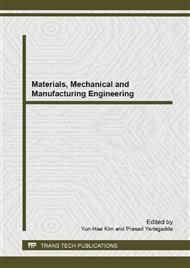p.505
p.515
p.522
p.530
p.536
p.541
p.546
p.553
p.558
Thermal Design Improvements on Avionic Device in Confined Space under Supersonic Conditions
Abstract:
Thermal design improvements of avionic devices in confined space under supersonic conditions are presented in this paper through a numerical studies and improvements on the heat sinks and cooling vents. The components locations are also rearranged. Thus the avionic device can operate in the confined space, and heat dissipation can be easier. Simulation results show that the cooling vents added on the surfaces of the electronic cabinet can make heat exchange more smoothly, and the high temperature zones are affected by the changing of the locations of heat sinks obviously. The design rules and guidelines are proposed to improve thermal design. The design and simulation results can be used as the reference for the thermal design of other avionic devices in the similar style.
Info:
Periodical:
Pages:
536-540
Citation:
Online since:
November 2013
Authors:
Keywords:
Price:
Сopyright:
© 2014 Trans Tech Publications Ltd. All Rights Reserved
Share:
Citation:


